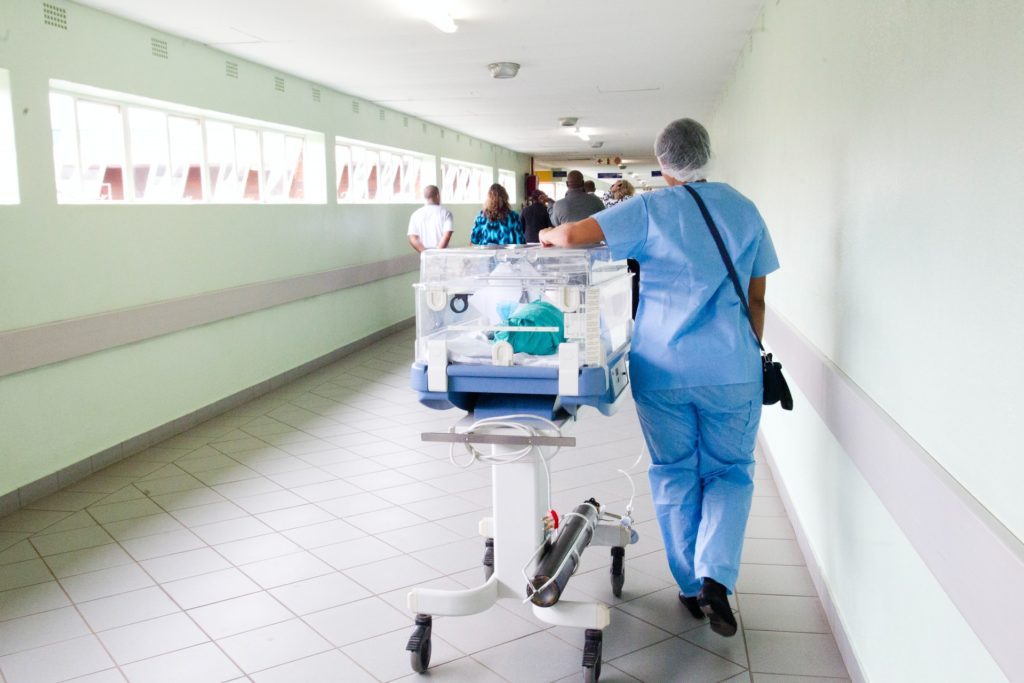Patient-Centered Medical Home
 “Although the patient-centered medical home provides a step-by-step plan for improving care quality and aligning it with wider reform efforts, people tend to ignore its real worth.”
“Although the patient-centered medical home provides a step-by-step plan for improving care quality and aligning it with wider reform efforts, people tend to ignore its real worth.”
What is a Patient-Centered Medical Home (PCMH)?
Healthcare organizations are actively pursuing new patient management solutions to fulfill tight quality and spending targets as the industry shifts away from traditional fee-for-service reimbursements and toward a new era of accountable, cost-conscious, coordinated care.
In this modern healthcare system, managing long-term diseases, reducing care burden, improving accessibility, and keeping the patient as a center of care are the main priorities. In fact, a patient-centered medical home (PCMH) provides that framework to achieve these objectives,
The patient-centered medical home is a set of principles and best practices aimed at promoting more comprehensive, data-driven preventative treatment and patient management.
What are some of the key competencies of a patient-centered medical home?
The first step in implementing a PCMH is to make a firm commitment to enhancing care quality and the patient experience. Before commencing on the PCMH path, organizations are advised to examine available resources, staffing or patient care gaps, and potential for improvement. Getting leadership and physician’s involvement is a crucial first step in the process, and it may make or break a successful change.
The PCMH recognition demands that practices follow a set of protocols designed to promote coordinated, patient-centered care. Use of patient registries for disease or risk classification, medication reconciliation, and the use of discharge planning, summaries of care, and health information sharing to facilitate smooth transitions for patients moving across the care continuum are among the criteria for NCQA recognition.
On the other hand, advanced medical systems will adopt electronic medical record (EMR) systems with clinical decision support, e-prescribing, and computerized provider order entry (CPOE). This will help your organization’s practices to report clinical measures, provide patient self-management support, and be able to utilize electronic drug and allergy interaction warnings.
It is necessary that these practices work continuously to sustain performance improvement in order to create a real impact. Also, ongoing periodical assessments to ensure sustainability of changes are necessary.
How is PCMH linked to team based-care?
Patient-centered medical home care is greatly linked with team-based care because, just like team-based care, PCMH also takes into account multidisciplinary collaborations to provide high-quality patient care.
“Care teams can look very different based upon what area they’re practicing in. There are patient-centered medical homes across the United States that have primary care physicians. It may be that what you need in your practice is a pharmacist because that helps you with medication management. But another patient-centered medical home may benefit more from having a social worker depending on their patient population. So, this is how PCMH involves multiple team members to support high-quality and patient-oriented care. “
Why is PCMH adoption important for achieving the Triple Aim?
What is the aim of putting in so many technological and procedural advancements? Because one of the key drivers of meaningful healthcare reform is the patient-centered medical home. The Triple Aim requires healthcare organizations to cut costs, improve patient care quality and satisfaction, and efficiently manage population health – all of which the PCMH model has been shown to do.
PCMH practices have been able to increase life expectancy, save millions through the better management of chronic diseases, decrease preventable readmissions by improving care coordination, and ensure better adherence to primary care. Patients are more satisfied when treated at a PCMH provider, the Patient-Centered Primary Care Collaborative recently found, and are less likely to spend long periods of time in the hospital due to chronic disease when managed appropriately by their hospital and primary care providers.
While the patient-centered medical home might not be for every organization, evidence for its effectiveness and impact on population health management continues to grow as adoption of the model spreads.
What are some strategies to sustain PCMH change?
To spread the adoption of the PCMH model among small practices, financial support, practical training, and other help are likely to continue to be important. Also, many researchers estimate that the involvement of patients is needed for the best outcome.
To develop a sustainable PCMH, a three-phase model should be implemented.
Phase I – Implementation
Those practices that are positioned to move to a PCMH model need to answer some critical strategic questions before they take action at the tactical level:
- What role does the model play in achieving the strategic goals and vision of the health system?
- How does the healthcare system ensure that clinical and financial goals are met?
- What infrastructure will be needed in the long run to support the model and future care redesign initiatives?
- What are the model’s desired outcomes?
Health practitioners can move forward with implementation once the strategic challenges have been resolved. The PCMH model will have the aforementioned critical components at its foundation (e.g., patient-centered care, comprehensive and coordinated care, health IT). While the specifics of how to proceed will be determined by the organization’s capabilities and culture, a successful implementation will include the following elements:
- The commitment and support of clinical and administrative leadership.
- Ongoing clinical engagement.
- Alignment with the health system’s mission, vision, values, and goals.
- Payment methodologies are designed to support the delivery of enhanced, value-based care services.
- Staff and leadership with change management skills.
- By considering both the strategic and tactical implications of a transition to a PCMH, health systems will be better able to develop a sustainable medical home that provides improved care and services to patients.
Phase II – Evolution
The evolution phase is about getting leadership, staff and providers buy-in of the PCMH model and having it become a part of the culture and everyday procedures, whereas the implementation phase is about setting up the elements needed to operationalize the PCMH.
What strategies can we put in? Here are some highly realistic strategies to do this;
- Understanding the significant cultural adjustment required for PCMH adoption, as well as educating providers about the model’s atypical medical practices.
- Determine the resources and tools required to ensure that the model receives ongoing maintenance, development, and improvement.
- Workflows, Policies, and Procedures — To support the model, redesign workflows, policies, and procedures.
- Consider how much time the transformation will take, as well as the impact it will have on provider schedules and patient volume.
- Determine what additional resources are required to support the model.
- Staff training programs are available.
- Patient engagement educational resources
- Tools for tracking and reporting.
- Staffing levels that are appropriate (e.g., physicians, case managers, nurses, medical assistants, support staff).
- Infrastructure and optimization of the healthcare IT system.
When done together, these steps help to ensure that the PCMH model is implemented as smoothly as possible. A smooth transition benefits not only the health system but also patients: the sooner the PCMH model is fully accepted by providers, the quicker patients will see improvements in their care.
Phase III – Integration
After evolution, integration is the logical next step. Procedures, culture, and behaviors evolve throughout the evolution phase of the continuum to integrate the PCMH paradigm into the health system. The process of integration extends beyond the health system to involve providers from all levels of care, including hospitals, specialized care, and subacute care. Simultaneously, the PCMH works with payers to take advantage of new payment models that promote value-based treatment.
In summary, PCMH is a contemporary healthcare system that improves care quality, satisfaction, and staff burnout. Sustainable strategies in the form of a three-phase framework are helpful in creating sustainable PCMH.
ARE YOU READY FOR TRANSFORMATION?
As the healthcare industry continues to transform, healthcare organizations need to be ready to adapt. At Dao Consulting Services, Inc., our focus is helping you achieve your operational, clinical, and quality goals by navigating quality and regulatory challenges, and adapting practical and consistent solutions that can be implemented and sustained at all levels of the organization.

